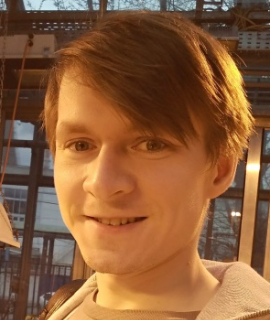Title : Complete plastid genome of the carnivorous plant Drosera rotundifolia reveals genome rearrangements and early stages of gene loss
Abstract:
Chloroplasts of most plants are responsible for photosynthesis and contain a conserved set of about 110 genes that encode components of housekeeping gene expression machinery and photosynthesis-related functions. However, a number of plants in the process of evolution have developed the ability to receive nutrients not through photosynthesis, but as a result of parasitism or predation. Such plants are less dependent on photosynthesis, and some parasitic plants do not contain chlorophyll at all. To date, a number of chloroplast genomes of parasitic plants have been sequenced, the analysis of which has shown that the chloroplast genome undergoes rearrangements in hemiparasites, while in non-photosynthetic species the reduction of the genome and the loss of genes associated with photosynthesis was also observed. Much less is known about the structure of the chloroplast genomes of carnivorous plants, in which the selective pressure on the photosynthetic apparatus is also relaxed.
We determined the complete nucleotide sequence of the chloroplast genome (cpDNA) of the insectivorous plant Drosera rotundifolia (sundew). Sequencing of cpDNA was performed by pyrosequencing of the total plant genomic DNA. The cpDNA is a circular molecule of 192.912 bp containing a pair of 52.949 bp inverted repeat regions (IRa and IRb), which are separated by small (SSC) and large (LSC) single copy regions of 63,504 bp and 23,510 bp, respectively. The size of the chloroplast genome of D. rotundifolia is larger than that of most flowering plants due to the increase in the length of inverted repeats. Chloroplast genome of D. rotundifolia contains 88 unique genes, including the ribosomal protein genes, genes of the photosystems I and II, the cytochrome b / f complex, the subunits of ATP synthases, and RNA polymerase genes. The peculiarity of cpDNA is the absence of NADH dehydrogenase genes, which may reflect the weakened dependence of this plant on photosynthesis. Unusual is also the large number of rearrangements in D. rotundifolia cpDNA, although the structure of the chloroplast genome (the order of the genes) remains practically unchanged in almost all flowering plants. Genomic rearrangements have led to the duplication of fragments of some genes presented in the form of pseudogenes. The weakened selection pressure is also indicated by the increased rate of evolution of the sequences of certain protein-coding genes, accumulation of repeats and short insertions/deletions. However, the photosynthetic apparatus is completely preserved.
In general, the structure and gene content of the chloroplast genome of D. rotundifolia reflects the early stage of the plant's transition to heterotrophic nutrition. The next stage in the evolution in course of transition to heterotrophy is represented by the chloroplast genomes of parasitic plants, in which not only the rearrangements of the genome and the accelerated evolution of the coding sequences are observed, but also the loss of the genes of the photosynthetic apparatus.


